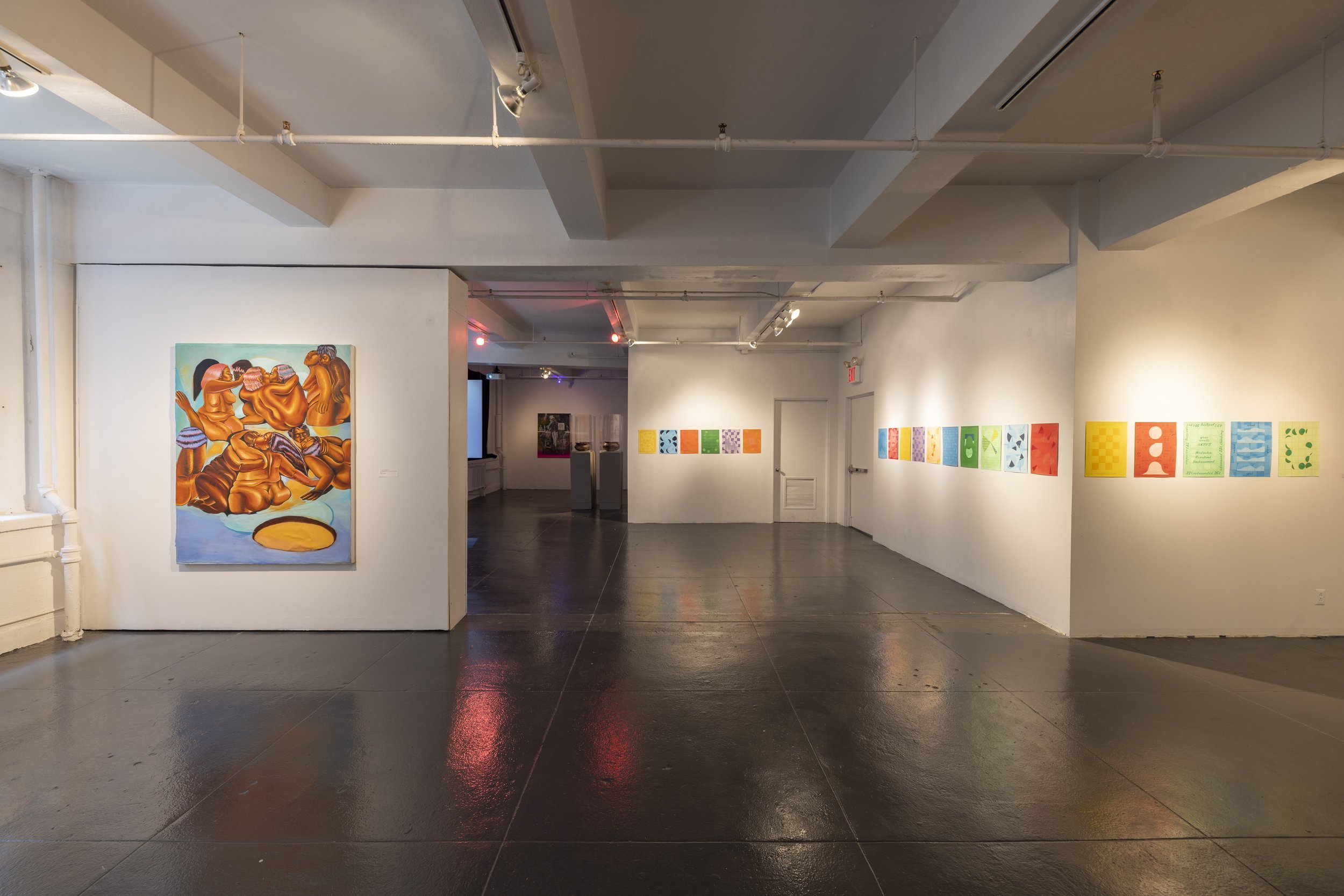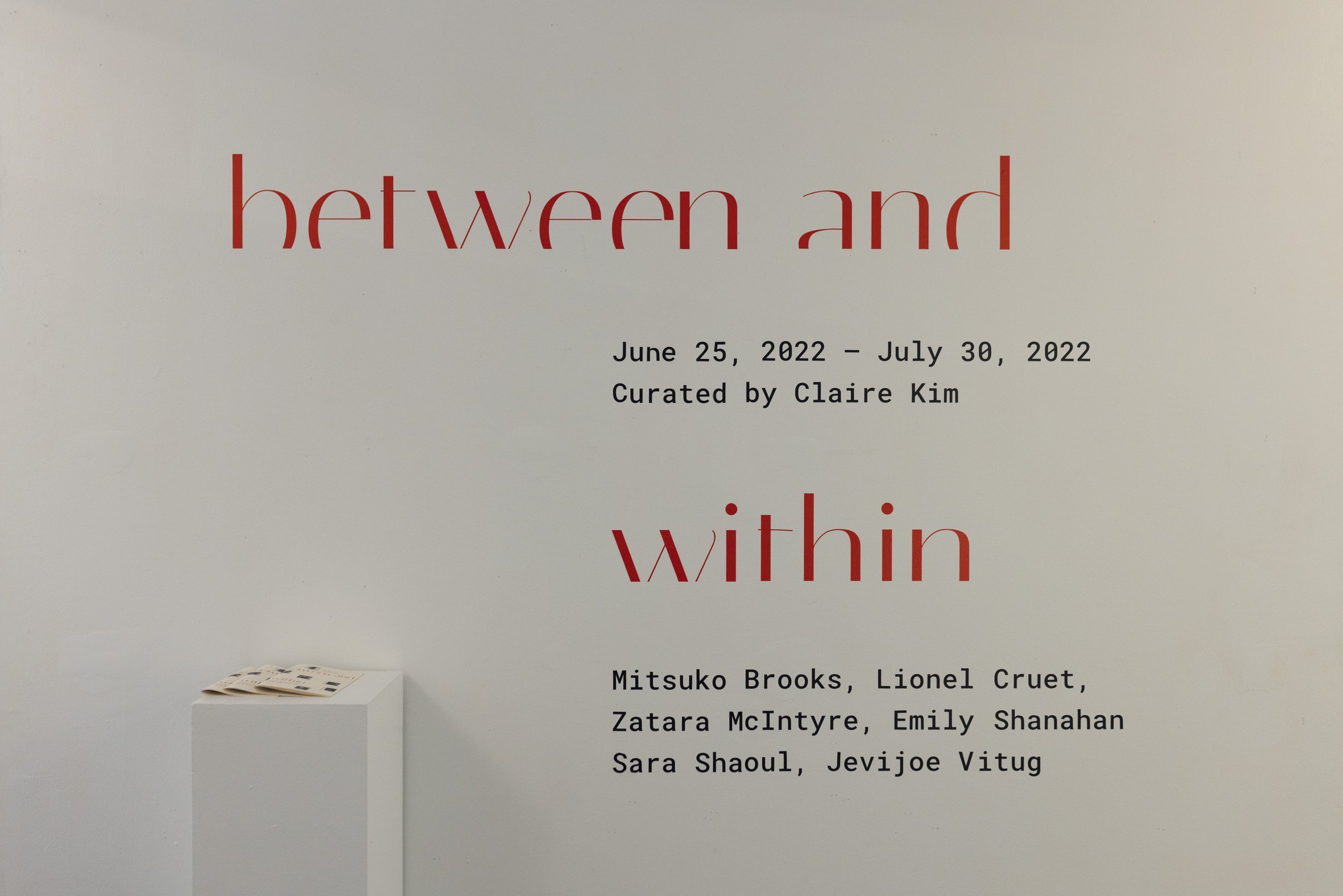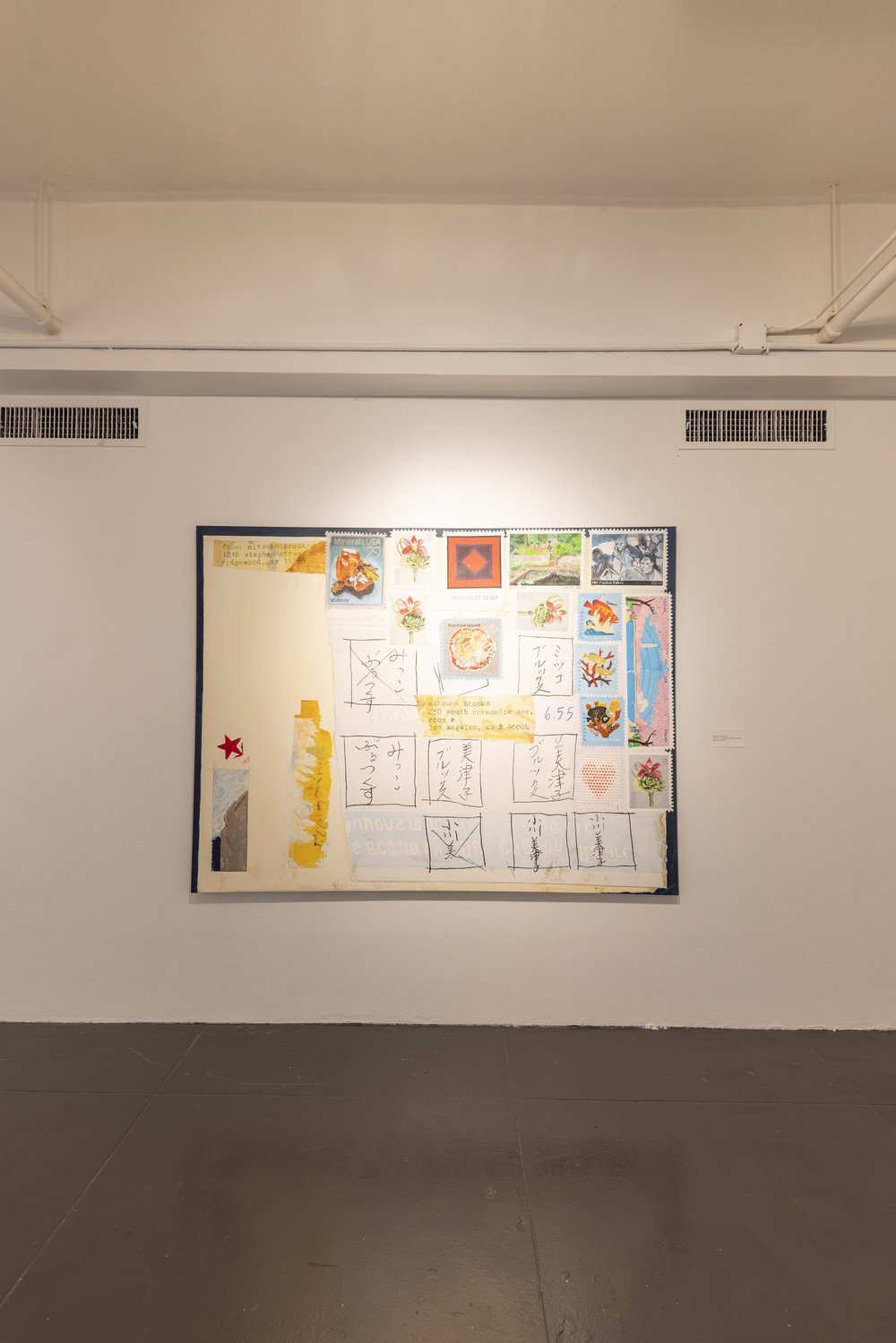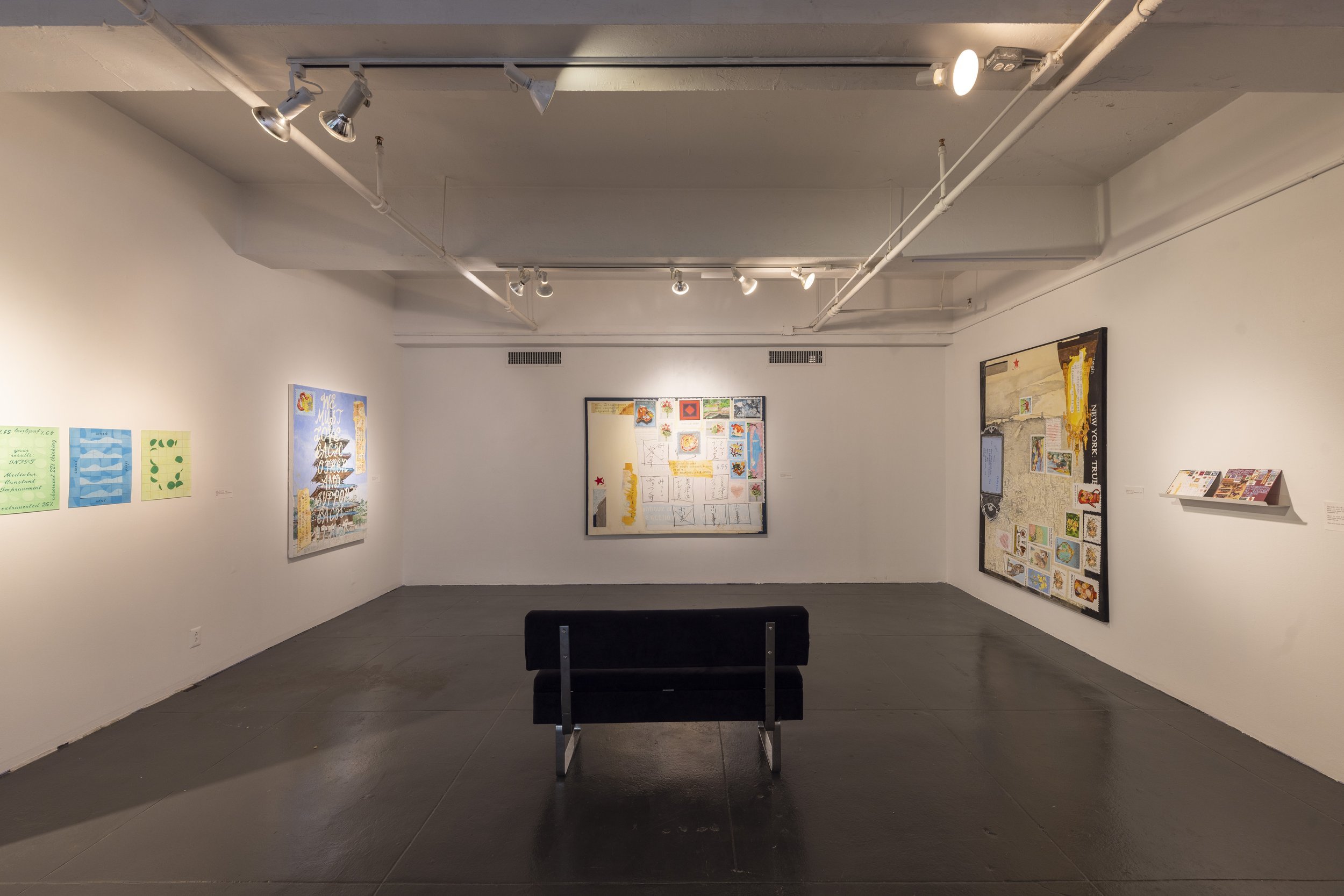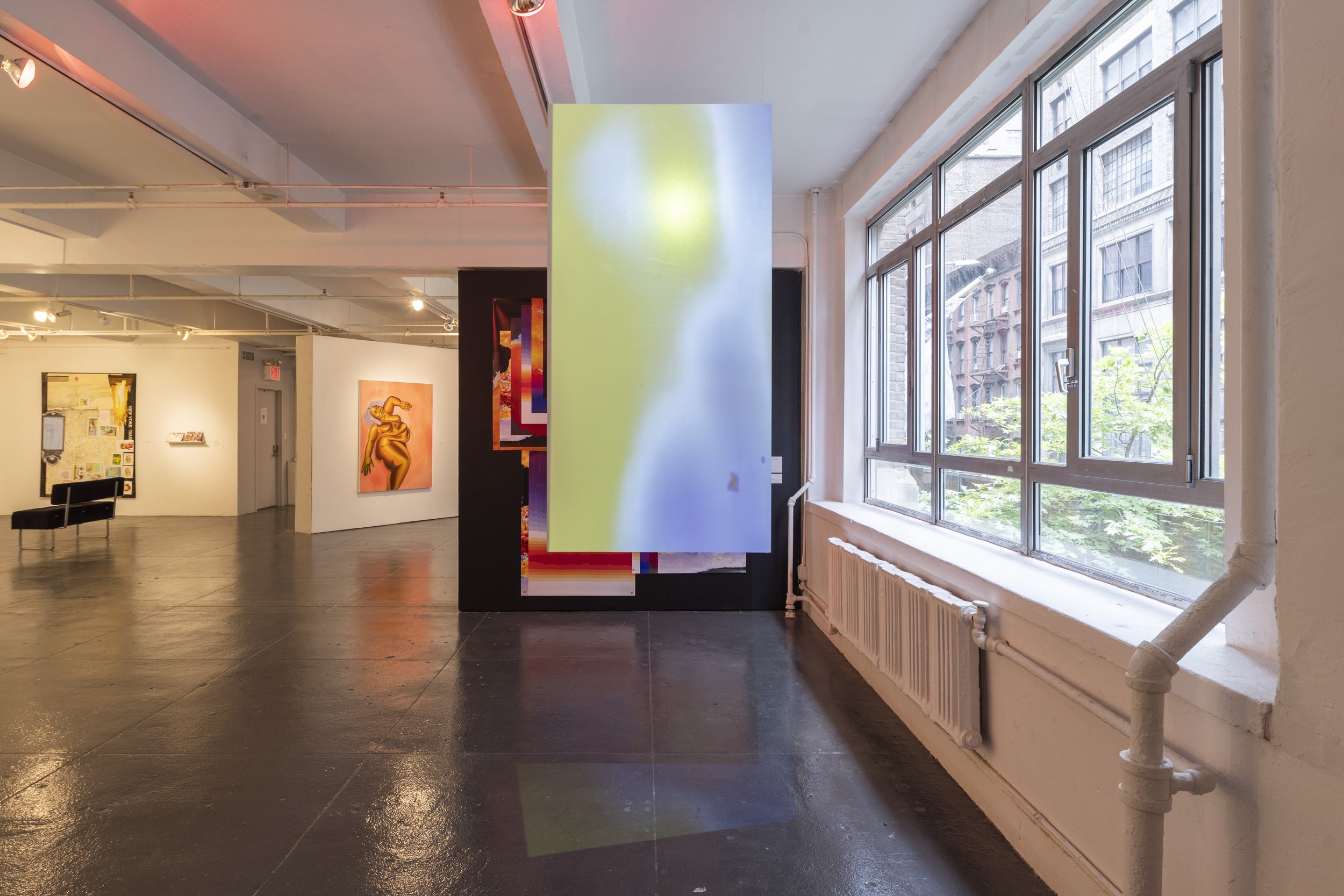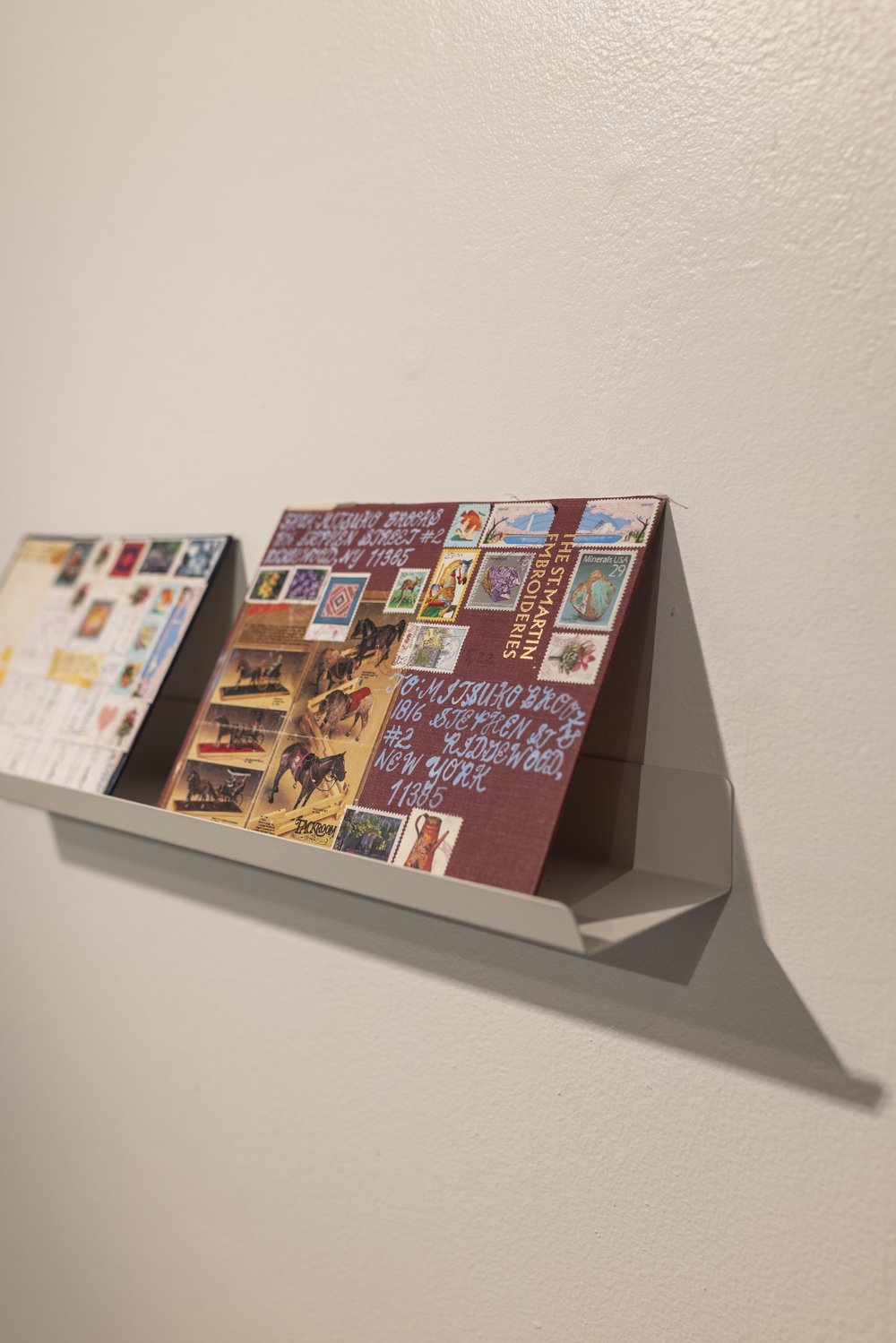June 25, 2022 – July 30, 2022
Curated by Claire Kim
Artists: Mitsuko Brooks, Lionel Cruet, Zatara McIntyre, Emily Shanahan, Sara Shaoul, Jevijoe Vitug
between and within is a group exhibition featuring new works by artists Mitsuko Brooks, Lionel Cruet, Zatara McIntyre, Emily Shanahan, Sara Shaoul, and Jevijoe Vitug. The title of the exhibition refers to the ways that each of the six artists use methods of layering and compression in their practices to unveil new ways of understanding various histories, narratives, and personal stakes. An additional meaning of the title speaks to the ways that each of the artists have and continue to forge their artistic practices alongside their full time positions as arts administrators and/ or cultural workers. The various negotiations of time and energy showcase a grouping of artworks which expand from a core passion—often dealing with deeply personal and rooted topics.
Using different approaches to layering, Brooks and McIntyre re-create visual representations of connection and communal healing in their large-scale paintings. Brooks paints enlarged versions of her own mail art—a personal and long-standing practice of sending handmade postcards to friends and family. Each painting consists of meticulous transfers of details in stamps, tearing of paper, and even the borders of library book covers (which she repurposes as the bases of her postcards.) For the piece, M.A.P. to Matsuko Brooks (2022), the artist replaces the original address to instead state the previous home address of her mother. The work also includes Brooks’ name in Japanese, written by her mother as a way to share a written language that Brooks does not know. The works showcase a clash of the hyper-realistic along with the unnoticeably altered, creating new meaning while simultaneously referencing the dissonance and misunderstandings amongst different generations of family. McIntyre also speaks to representations of community in her paintings. She creates worlds in which nude femme figures dance, sway, and touch to celebrate tender self-acceptance while exploring the subjectivity of Black womanhood. In To Imagine is to be Replenished (2022), the many figures are seen embracing one another while their bodies boast rolls of skin, dimples, and stretch marks. On the bottom right of the canvas is an oblong black oval—a hole, void, or entrance of sorts—beckoning viewers to enter or engage with this seemingly faraway and utopian place.
Artists Shanahan and Cruet extract information from sources ranging from phone apps that track personal data to public images of global weather patterns. In a series of new abstract drawings, Shanahan reinterprets, flattens, and distills records from apps that track her own screen time, reproductive cycles, finances, and health. Her series of twenty one drawings, titled My Daily Average (2022), represents an image of the artist, one that she refers to as a “fragmented self-portrait.” The works are brightly colored and made with acrylic ink and graphite on hand cut layers of paper, offering bits and pieces of obscured information—steps taken, money spent, lengths of period cycles, etc. One particular drawing is on a grid with circles in shades of red—the center text in italicized writing states, “You went further today than you did the day before.” Shanahan, whose previous works were mostly video, opted to engage with a more tactile form of making for this series—adding physical layers of material that may be interpreted as a metaphors for the ways in which technology’s ability to control the habits and actions of our daily lives is often unnoticed or difficult to gauge. Whereas Cruet excavates a different kind of information, stacking aerial thermal images of earth's oceans to reveal rising temperatures and CO2 levels. The artist’s large scale photographic prints of such images ultimately emphasize the dangerous effects of climate catastrophe. In their installation, four photographic prints are shown together—their overlapping edges and corners further emphasizing the stacked nature of the images in each piece. Cruet often refers to the experience of viewing the stacked images as similar to engaging with many open tabs on an internet browser, giving the viewer a sense of overwhelming unknown or a loss of control—something that many may relate to their own relationship to understanding changing weather patterns.
In their installations, Shaoul and Vitug blur the boundaries of real and fake, destabilizing visitors via the partial or forgotten truths that their works present. Shaoul displays ephemera and set materials from the makings of a cult Italian feminist science fiction film from the 1970’s—both the installation and the imagined film is titled Nuova (2022). The film is shown to have been heavily influenced by the writings of Italian feminist Carla Lonzi who is best known as the cofounder of Rivolta Femminile, an Italian feminist collective formed in 1970. Within the installation are glitches that may have viewers questioning the truth of this film’s existence: some materials look aged while others do not; the images of the actor resemble those of the director; and most importantly the location of this installation is in an art gallery. Shaoul uses layers of storytelling that alters the viewer’s ideas of subject and object relationship while also engaging with a timely revival of a particular feminist movement. Vitug’s paintings and sculptures engage with a different history, particularly those of the often-erased stories of Filipino-Americans. One such history is that of the Filipino cannery workers of Seattle in the 1930’s who created the first Filipino-led union in the United States. Vitug’s painting, 1952 Yearbook of Cannery Workers Local 37 (2022) and 3-D printed sculpture, Alaskero (Carlos Bulosan as Salmon Guardian) (2022) commemorate the steadfast determination of the “Alaskeros” who worked in the Alaskan salmon canneries in the summers and in the fields of the pacific northwest in the other seasons. The installation of these objects—mirroring the display methods of larger prestigious museum institutions that store historical artifacts—further reference the opposing ways that artifacts are exhibited in comparison to artworks.
between and within hones in on the nuanced methods used by the artists to digest and re-route information. Through varying methods of layering, this cohort creates new and expanded ways of looking, understanding, and depicting the often-slippery nature of truths and unfathomable realities. The six artists have shown immense grace and tenacity while continuing their practices in the context of an on-going pandemic and their works speak to the triumphs against such adversities.
Photo Credit: Jakob Dahlin

